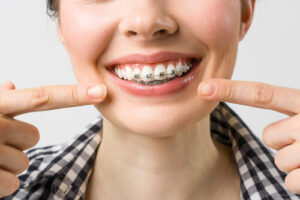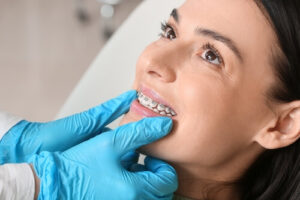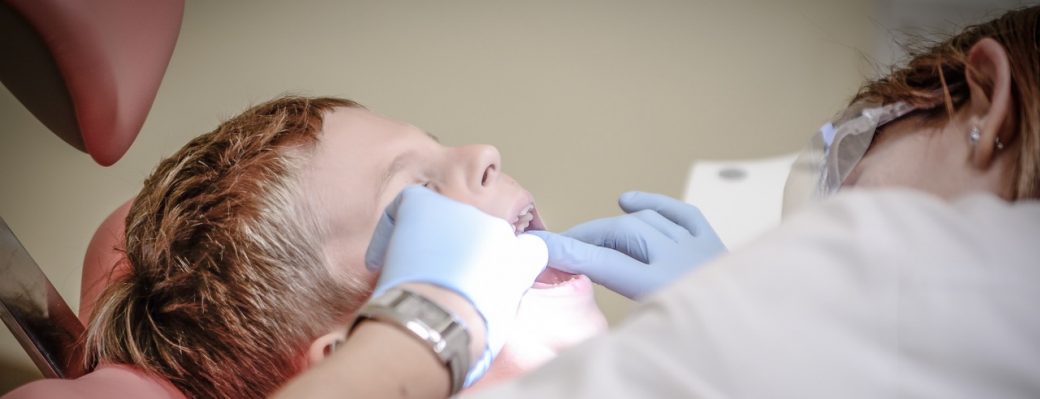Braces, both before and after undergoing orthodontic treatment, can evoke a range of emotions and expectations. Before braces, individuals often anticipate the transformative power of these orthodontic appliances, envisioning a future with straighter teeth, improved bite alignment, and a more confident smile. They may also expect certain adjustments to their daily routine, such as dietary restrictions and regular orthodontic visits. On the other hand, after braces are removed, individuals eagerly look forward to revealing their beautifully aligned teeth, enjoying the fruits of their commitment to orthodontic treatment. The anticipation of a remarkable smile and newfound self-assurance often accompanies the final stage of this transformative journey. Throughout this process, braces before and after catalyze numerous expectations, promising a future defined by enhanced dental aesthetics and improved oral health.
What are braces, and how do they work?
Braces are orthodontic devices designed to correct dental misalignments and bite irregularities. They consist of brackets, wires, and other components that work together to apply gentle pressure on the teeth and gradually shift them into proper alignment over time.
The process begins with an initial consultation with an orthodontist who assesses the individual’s dental condition and determines if braces are necessary. If braces are recommended, the orthodontist will create a customized treatment plan based on the patient’s specific needs.
Once the braces are placed, the brackets are attached to the front surface of the teeth using a special adhesive. The archwire is then threaded through the brackets, and small elastic bands or ligatures may be used to secure the wire in place. These components work in conjunction to exert constant, controlled force on the teeth, gently guiding them into their desired positions.
Over time, the orthodontist will make adjustments to the braces by tightening or replacing the archwire, gradually increasing the pressure to continue the teeth-moving process. These adjustments typically occur during periodic visits, which are scheduled based on the individual’s treatment plan.
 Braces can address various orthodontic issues, including crooked teeth, overcrowding, gaps between front teeth, overbites, underbites, and crossbites. The duration of orthodontic treatment with braces varies depending on the severity of the misalignment and the individual’s response to the treatment. Generally, it can take anywhere from several months to a few years to achieve the desired results.
Braces can address various orthodontic issues, including crooked teeth, overcrowding, gaps between front teeth, overbites, underbites, and crossbites. The duration of orthodontic treatment with braces varies depending on the severity of the misalignment and the individual’s response to the treatment. Generally, it can take anywhere from several months to a few years to achieve the desired results.
In addition to traditional metal braces, other types of braces are available, such as ceramic braces that blend in with the teeth or clear aligners like Invisalign, which are removable and nearly invisible. The choice of braces depends on the individual’s specific needs and preferences and the orthodontist’s recommendation.
Benefits of Having Braces
Having braces offers several benefits, both in terms of oral health and aesthetic appearance. Here are some of the key advantages of undergoing orthodontic treatment with braces:
- Improved Dental Alignment: The primary purpose of braces is to correct misaligned teeth and jaw irregularities. By gradually shifting the teeth into proper positions, braces help improve dental alignment, leading to a more functional bite and a healthier, more balanced mouth.
- Enhanced Oral Health: Crooked or crowded teeth can make oral hygiene practices more challenging. It becomes difficult to brush and floss effectively, increasing the risk of plaque buildup, tooth decay, and gum disease. Braces help align the teeth, making it easier to maintain proper oral hygiene and reducing the chances of dental issues in the future.
- Corrected Bite Problems: Malocclusions, such as overbites, underbites, crossbites (posterior or anterior crossbite), and open bites, can lead to difficulties in biting, chewing, and speaking. Braces work to align the teeth and bring the lower jaw forward, correcting these bite issues and improving overall oral function.
- Reduced Risk of Dental Trauma: Protruding teeth are more susceptible to injuries during accidents or sports activities. By aligning the teeth properly, braces can help reduce the risk of dental trauma by providing better protection and alignment.
- Enhanced Aesthetics and Self-Confidence: Braces can significantly improve the appearance of your smile. Straightening crooked or misaligned teeth can boost self-confidence, improving social interactions and overall self-esteem.
- Long-Term Dental Stability: Once the braces treatment is complete, the teeth are more likely to remain in their new positions, thanks to retainers worn after braces. This ensures long-term dental stability and helps maintain the results achieved through orthodontic treatment.
- Potential Airway Benefits: In some cases, orthodontic treatment with braces can contribute to improved airway function. By aligning the teeth and jaws, braces can help create more space in the oral cavity, potentially alleviating breathing difficulties associated with certain conditions like sleep apnea or snoring.
It is important to note that the specific benefits of braces may vary depending on each individual’s dental condition and treatment plan. Consulting with an orthodontist will provide personalized information about the potential advantages of braces in your particular case.
Common Orthodontic services
For an actual patient, orthodontic treatments address dental misalignments and bite issues, improving oral health, functionality, and aesthetics. Here are some common orthodontic treatments commonly used for teens and adults to have straight teeth:
Upper and lower braces
This consists of brackets and wires that apply gentle pressure to align both the upper and lower teeth. This comprehensive approach helps correct issues such as crowding, spacing, overbites, anterior open bite, and underbites, ensuring proper alignment of the entire dental arch.
a. Metal Braces: Traditional metal braces consist of metal brackets bonded to the front surface of the lower and upper teeth and connected with an archwire. Elastic bands or ligatures may be used to hold the wire in place. Metal braces are highly effective in treating various dental issues and are often recommended for more complex cases.
b. Ceramic Braces: Similar to metal braces, ceramic braces utilize brackets and wires. However, the brackets are made from a ceramic material that blends in with the natural tooth color, making them less noticeable. Ceramic braces are popular for individuals who desire a more discreet orthodontic option.
c. Lingual Braces: Lingual braces are similar to traditional braces, but the brackets and wires are placed on the back surface of the teeth, facing the tongue. This placement makes them virtually invisible from the front, providing a discreet treatment option. Lingual braces are suitable for individuals who prefer a hidden orthodontic solution.
 Clear Aligners
Clear Aligners
Clear aligners like Invisalign are a series of custom-made, removable trays that gradually shift the teeth into alignment. They are made from clear plastic material, making them virtually invisible when worn. Clear aligners offer convenience, as they can be removed for eating, brushing, and flossing.
Self-Ligating Braces
Self-ligating braces function similarly to traditional braces but utilize specialized brackets that eliminate the need for elastic bands or ligatures. These brackets have a built-in mechanism to hold the archwire, reducing friction and allowing for more efficient tooth movement. Self-ligating braces can offer faster treatment times and easier maintenance.
Palatal Expanders
Palatal expanders are used to address narrow dental arches and correct issues related to overcrowding. They work by applying gentle pressure to expand the upper jaw, creating more space for proper tooth alignment.
Jaw Surgery
In some cases, orthognathic surgery may be necessary to correct severe jaw misalignments or skeletal discrepancies. This surgical procedure, often done in conjunction with orthodontic treatment, repositions the jaws to achieve optimal bite alignment and facial balance.
The most appropriate orthodontic treatment for teens or adults depends on the specific dental condition, the severity of misalignment, and individual preferences. Consulting with an orthodontist will help determine the most suitable treatment plan to achieve the desired results.
How Long Does Treatment Last
The duration of orthodontic treatment varies depending on several factors, including the complexity of the dental issues, the type of treatment, the age of the individual, and the response to treatment. On average, orthodontic treatment typically lasts between 1 to 3 years. However, it’s important to note that this is a general estimate, and the actual duration can be shorter or longer depending on individual circumstances.
For mild to moderate cases, such as minor crowding or slight misalignments, the treatment duration may be on the shorter end of the spectrum, usually around 12 to 18 months. Simpler orthodontic techniques like clear aligners or limited braces may be sufficient in these cases.
More complex cases, such as severe overcrowding, significant bite issues, or skeletal discrepancies, may require a longer treatment time. These cases often involve comprehensive orthodontic treatment with braces or other orthodontic appliances and potential coordination with other dental or orthognathic surgical procedures. Treatment times for such cases can extend beyond two years.
It’s important to note that orthodontic treatment requires time for the teeth to gradually shift into their desired positions. Additionally, regular adjustments and monitoring by the orthodontist are necessary to ensure the treatment progresses as planned.
During the initial consultation, the orthodontist will evaluate your specific dental condition, discuss treatment options, and provide an estimate of the expected treatment duration based on your case. It’s important to follow the orthodontist’s instructions, attend scheduled appointments, and maintain good oral hygiene to help ensure the treatment progresses smoothly and achieves the desired results within the estimated timeframe.
What Can I Expect During the Process
During the orthodontic process, you can expect a series of steps and experiences as your teeth gradually move into their desired positions. Here’s a general overview of what you can expect during orthodontic treatment:
- Initial Consultation: The process typically begins with an initial consultation with an orthodontist. During this visit, your dental condition will be assessed, and the orthodontist will discuss treatment options, including the recommended type of braces or aligners based on your specific needs.
- Treatment Planning: After the initial consultation, the orthodontist will create a personalized treatment plan tailored to your dental condition and goals. This plan will outline the expected duration of treatment, any necessary extractions, if applicable, and other details specific to your case.
- Braces Placement or Aligner Fitting: If you opt for traditional braces, the next step involves the placement of brackets on the teeth. The brackets are bonded using a special adhesive, and archwires are inserted to connect the brackets. For clear aligners, impressions or digital scans of your teeth will be taken to create custom aligners that fit snugly over your teeth.
- Adjustment Appointments: You will have regular adjustment appointments with your orthodontist throughout the treatment process. During these visits, the archwires may be adjusted or changed, and elastics or other components may be added or modified to continue guiding the teeth into alignment. These adjustments are necessary to ensure consistent progress.
- Oral Hygiene and Care: Proper oral hygiene is crucial during orthodontic treatment. You’ll need to maintain regular brushing and flossing, paying extra attention to cleaning around the brackets or aligners. Your orthodontist will provide instructions on how to keep your teeth and braces clean and healthy.
- Discomfort or Sensitivity: It is common to experience some discomfort or sensitivity in the teeth and gums during the initial days after braces placement or aligner changes. Over-the-counter pain relievers can help alleviate any mild discomfort. Your orthodontist can provide additional guidance on managing any discomfort throughout the treatment process.
- Dietary Restrictions: Certain dietary restrictions may be advised during orthodontic treatment, particularly with traditional braces. Avoiding sticky or hard foods that can damage the braces or cause wires to become loose is typically recommended. Your orthodontist will provide specific guidelines on what to eat and avoid during treatment.
- Retention Phase: After the active orthodontic treatment is complete, a retention phase begins. This involves wearing retainers, which help maintain the teeth in their newly aligned positions. Retainers may be removable or fixed behind the teeth, depending on your orthodontist’s recommendation.
Remember, every orthodontic journey is unique, and the specifics of your treatment may vary. Regular communication with your orthodontist, following their instructions, and attending scheduled appointments will ensure the best outcome and a successful orthodontic process.
Aftercare and Maintenance
After the active orthodontic treatment is complete, proper aftercare and maintenance are essential to ensure the longevity of the results achieved. Here are some key aspects of orthodontic aftercare:
- Retainers: Retainers play a crucial role in maintaining the teeth in their new positions. Your orthodontist will provide specific instructions on how often and for how long you should wear your retainers. It’s important to follow these instructions diligently to prevent any shifting or relapse of the teeth. Retainers can be removable or fixed (bonded) behind the teeth, depending on your needs.
- Oral Hygiene: Good oral hygiene practices should continue during and after orthodontic treatment. Brush your teeth thoroughly at least twice daily using a soft-bristled toothbrush and fluoride toothpaste. Flossing is equally important, and special tools like floss threaders or interdental brushes may help clean between the teeth and around the orthodontic appliances. Regular dental check-ups and cleanings are also crucial for maintaining oral health.
- Diet and Eating Habits: While dietary restrictions may have been more stringent during active orthodontic treatment, it’s still important to be mindful of what you eat to avoid damaging your retainers or causing any other issues. Sticky or hard foods that can dislodge or damage the retainers should be avoided. Additionally, limit sugary snacks and drinks to maintain optimal oral health.
 Follow-Up Appointments: Your orthodontist will schedule follow-up appointments to monitor the stability of the results and the overall oral health. Attending these appointments as scheduled is important to ensure any potential issues can be addressed promptly.
Follow-Up Appointments: Your orthodontist will schedule follow-up appointments to monitor the stability of the results and the overall oral health. Attending these appointments as scheduled is important to ensure any potential issues can be addressed promptly.- Mouthguard for Sports: If you participate in sports or other physical activities, wearing a mouthguard is crucial to protect your teeth and orthodontic appliances. Consult your orthodontist for recommendations on the most suitable mouthguard for your needs.
- Communication with Orthodontist: Maintain open communication with your orthodontist even after completing the active treatment. If you have any concerns or notice any changes in your teeth or bite, it’s important to contact your orthodontist for guidance and assistance.
By following these aftercare guidelines and maintaining regular oral hygiene practices, you can help ensure that the results of your orthodontic treatment remain stable and your oral health is maintained in the long term.
References:
https://www.3m.com/3M/en_US/types-of-braces-and-treatment-us/getting-started-with-braces/
https://www.news-medical.net/health/Procedure-for-Dental-Braces.aspx
https://www.healthline.com/health/dental-and-oral-health/how-are-braces-put-on


